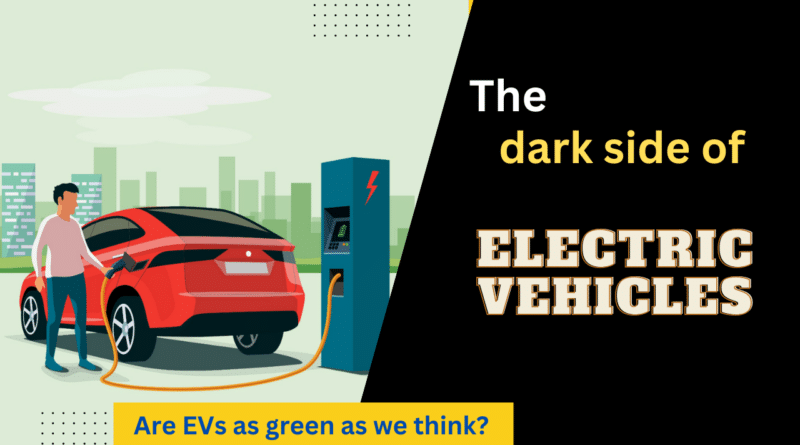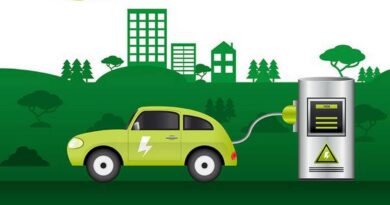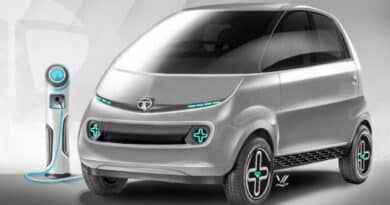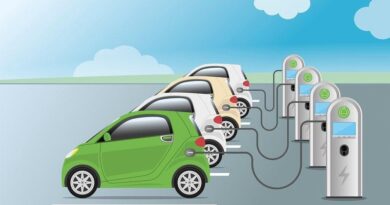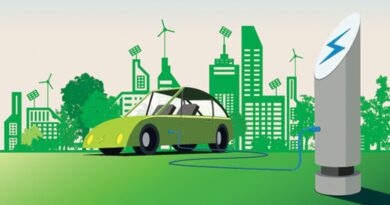The dark side of electric vehicles: Are EVs as green as we think?
Electric vehicles have become increasingly popular in recent years as technology has improved, and the role of government has changed. EVs offer many benefits over traditional gasoline-powered vehicles, including lower emissions, cheaper operating costs, and a smaller environmental footprint. With the continued rise in fuel prices and concern over climate change, electric vehicles are becoming an increasingly attractive option for consumers.
We’ve all been there before. You’re driving down the highway and see a dirty, old truck belching black smoke from its tailpipe. You can’t help but think about how bad that is for the environment. Then, you see a shiny, new Tesla zip by, and you think, “Now that’s a car that’s good for the environment!” But are electric vehicles (EVs) as green as we think? In this article, we’ll look at the dark side of EVs to see if they’re as environmentally friendly as we believe.
The dark side of electric vehicles
Electric vehicles are becoming increasingly popular, but this environmental issue has a dark side. EVs produce emissions that contribute to climate change and air pollution and consume energy from power plants that produce these pollutants.
Are EVs as green as we think?
Electric vehicles are becoming increasingly popular, but are they as green as we think? There is a dark side to EVs that many people are not aware of. EVs can cause environmental issues if they are not properly disposed of. EVs contain several toxic chemicals, including lead, cadmium, and nickel. If these chemicals are not properly disposed of, they can leach into the ground and contaminate groundwater and soil. EV batteries also contain several heavy metals, which can be released into the environment if the batteries are not properly recycled. Several environmental issues need to be considered when disposing of EV batteries. First, the batteries must be properly recycled to avoid
Electric vehicles are becoming increasingly popular as people look for more environmentally friendly travel methods. However, there is a dark side to EVs that people may not be aware of. EVs have a significant environmental impact, both in terms of manufacturing and disposal of them. Manufacturing EVs requires a lot of energy and resources, and the process produces a significant amount of pollution. EVs also contain several toxic chemicals, which can be released into the environment if the vehicles are not disposed of properly. EVs are also much less efficient than traditional gasoline-powered vehicles, requiring more energy to travel the same distance. This means that EVs have a larger carbon footprint than gasoline-powered vehicles. Despite these drawbacks,
The advantages of electric automobiles over conventional gasoline-powered vehicles are numerous. They don’t generate any pollutants and are less expensive to run and maintain. However, there is a negative aspect to electric cars as well. They may not be as safe as vehicles driven by gasoline and can harm the environment. Compared to gasoline-powered cars, electric vehicles provide several benefits. They are cheaper to operate and maintain, and they emit no pollutants. However, electric vehicles also have a dark side. They can cause environmental problems and may not be as safe as gasoline-powered cars. Electric vehicles get power from batteries, which must be regularly replaced or recharged. The manufacturing and disposal of these batteries can cause environmental problems. Electric vehicles also have shorter.
When Batteries Retire
The report says that additional has to be done to spot uses for vehicle batteries once they reach retirement age. Although they can’t power a carriage, the batteries could also be able to do less hard tasks like store electricity from wind turbines and star farms.
The report additionally says higher ways to measure electric batteries’ health would make it easier to assess whether or not they are often reused or repaired.
And if the batteries will not be used or, as forecasted, the provision of batteries exceeds second-hand demand, fast and additional economical use ways have to be compelled to be developed which will extract the dear raw materials like metal and metallic element, which may be environmentally damaging to mine. Currently, within the UK, there aren’t any dedicated operation facilities for processing electrical vehicle waste batteries.
There’s additionally a general lack of technical ability, with a 2015 survey from the united kingdom Institute of the Motor business finding there have been only 1000 trained technicians within the country capable of mating electrical vehicles, with another,1000 in coaching — but a pair of of the country’s a hundred and 70,000 motor technicians.
The batteries created by completely different makers vary widely; therefore, the paper implies additional standardization to permit easier use. Current styles don’t lend themselves to simple philosophical theory by hand or machine.
Advancing Industry
Ownership of electric vehicles is rapidly increasing. By 2030, the Global Energy Agency estimates that 125 million will be in use worldwide, with that number increasing if governments speed up the pace of legal change.
Worldwide sales of new electric vehicles reached 2.1 million last year. With 1.2 million – or 56% of all-electric vehicles sold in 2018 – China is the largest market for electric cars globally. 99% of the sales of electric buses, motorcycles, scooters, and trucks are also attributed to China.
With 361,000 electric-powered cars sold in the US in 2018, over half of them being the latest Tesla 3 model, the country came in a distant second. Norway has the highest market share, with 49% of newly sold vehicles being pure or hybrid electric.
As limits on the price of new oil and gas cars loom across Europe, demand to go green is escalating. Germany will stop selling all new gasoline and diesel vehicles in 2030, Scotland in 2032, France in 2040, and the United Kingdom in 2032.
Final Thoughts
Electric vehicles are becoming increasingly popular, but some challenges still need to be addressed. The infrastructure is one of the key obstacles. The number of electronic automobiles on the road cannot be supported by the current number of charging stations. This implies that those who drive electric cars may need to travel to a charging station. The price is another difficulty. Even now, gasoline-powered automobiles are more expensive than electric ones. This is a barrier for many people who want an electric vehicle. The government can play a role in addressing these challenges. They can provide funding for the construction of charging stations and offer incentives for people to buy electric vehicles.
Conclusion
Despite the many benefits of electric vehicles, there is a dark side to EVs that many people are unaware of. EVs are not as green as we think, and they have the potential to do great harm to the environment. We must be careful when we use EVs and ensure we are doing everything possible to reduce their environmental impact.

